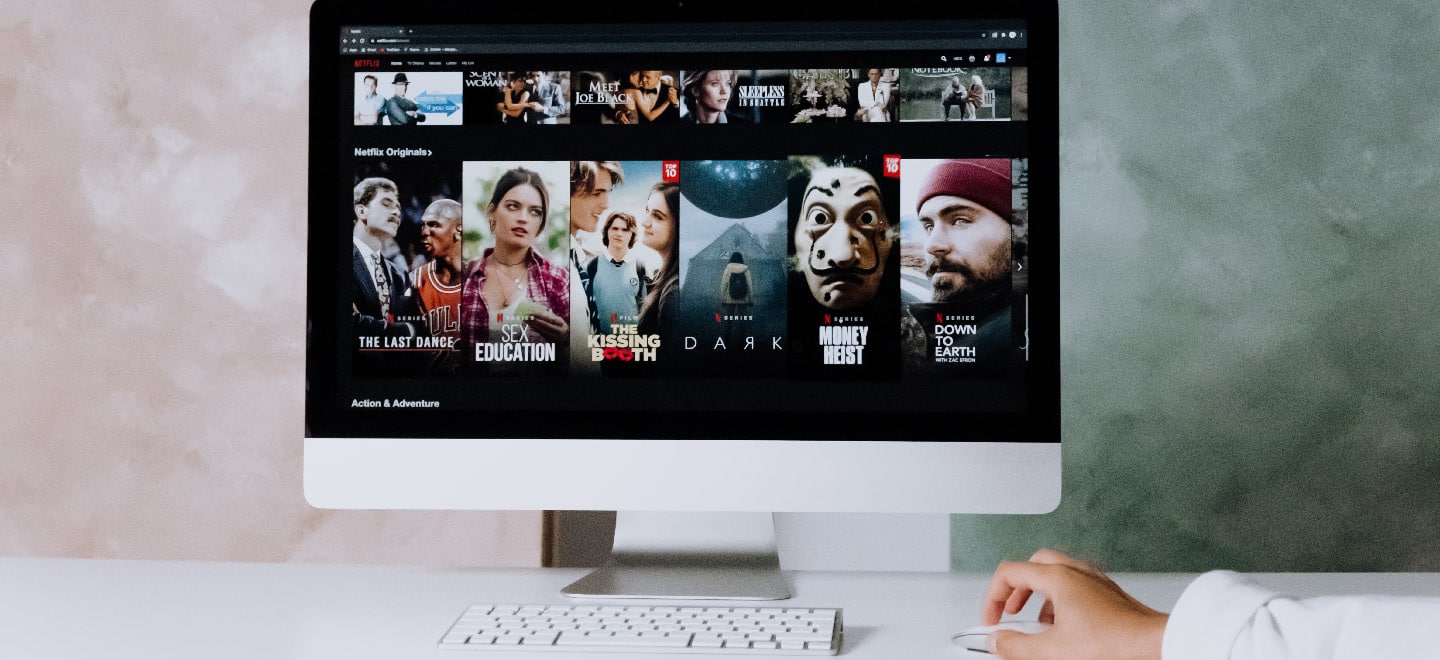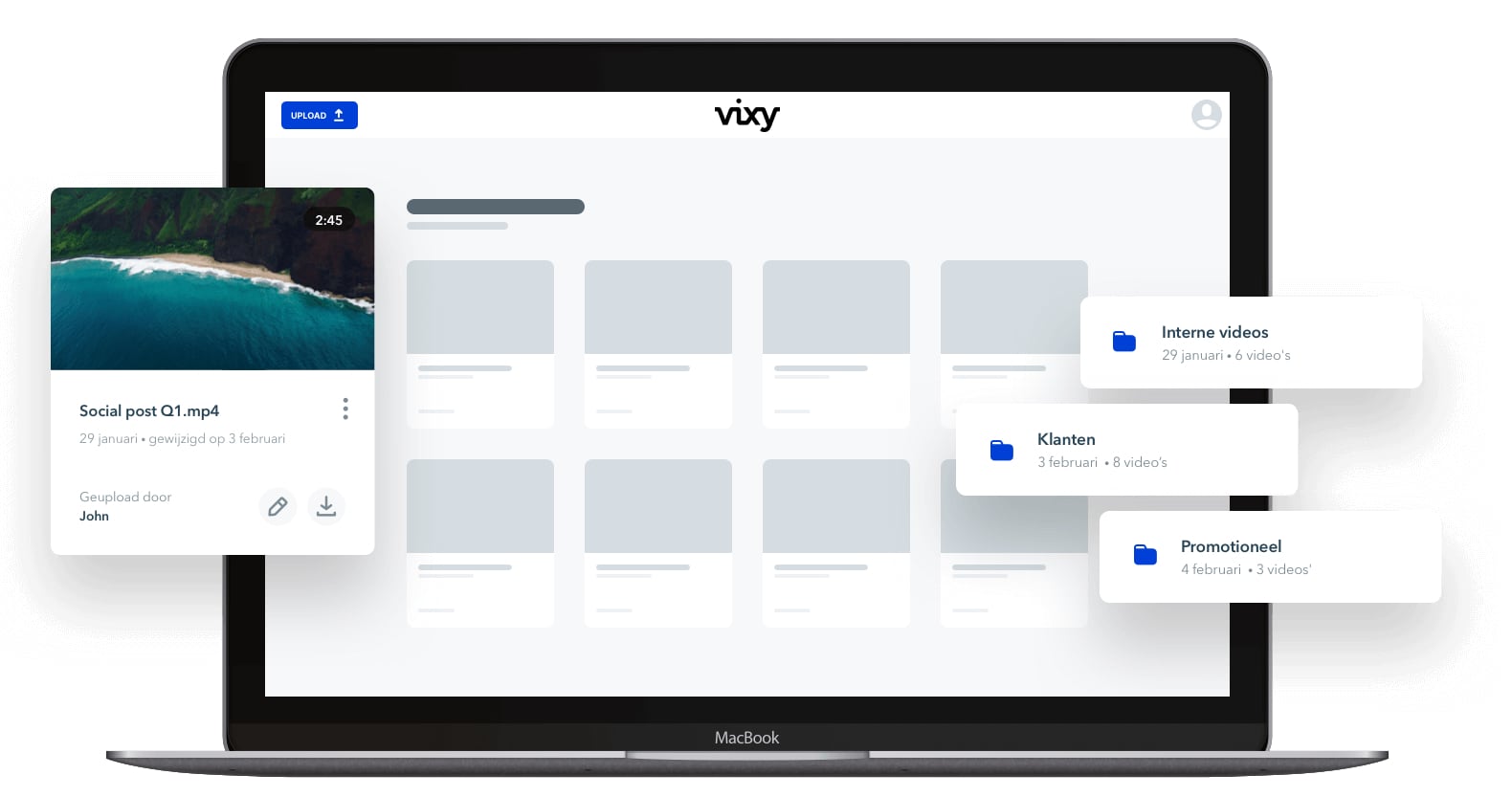How to set up your online fitness streaming service in 5 steps..

In this article, we give a step-by-step explanation on how to set up your own video streaming website, in order to offer your valuable training, entertainment, or educational video content. Video streaming is bigger than ever and makes up an important part of the communication strategy or even the business model for an increasing number of companies.
A little background information – while the use of on-demand video streaming has been growing very fast for years, live streaming has also gained momentum due to the pandemic. Just before the pandemic, global revenue for video streaming was predicted to increase with almost 15% (from 24.8 to 28.1 billion USD (Finances online, 2022)). In Spain and Austria, video and TV streaming during the COVID-19 outbreak in 2020 even increased by more than 40% in a few months (Bloomberg, 2020).
The video streaming market is therefore developing rapidly. The right content and focus on the right niche will bring many business opportunities. With your own video streaming website, you have full control over the viewer as well as the revenue model. Given the obvious growth and subsequent business opportunities, now is the time to realize your video streaming business ambitions.
In the past 10 years, we have helped both large multinationals and local companies (e.g. yoga schools) with their own online video platform. In this step-by-step plan, we share our technical and practical experiences that come with setting up your own video streaming website. We will also explain a bit more about the components of a good practise video streaming website.
Let’s quickly move on to the step-by-step plan: How to create your own streaming video website?
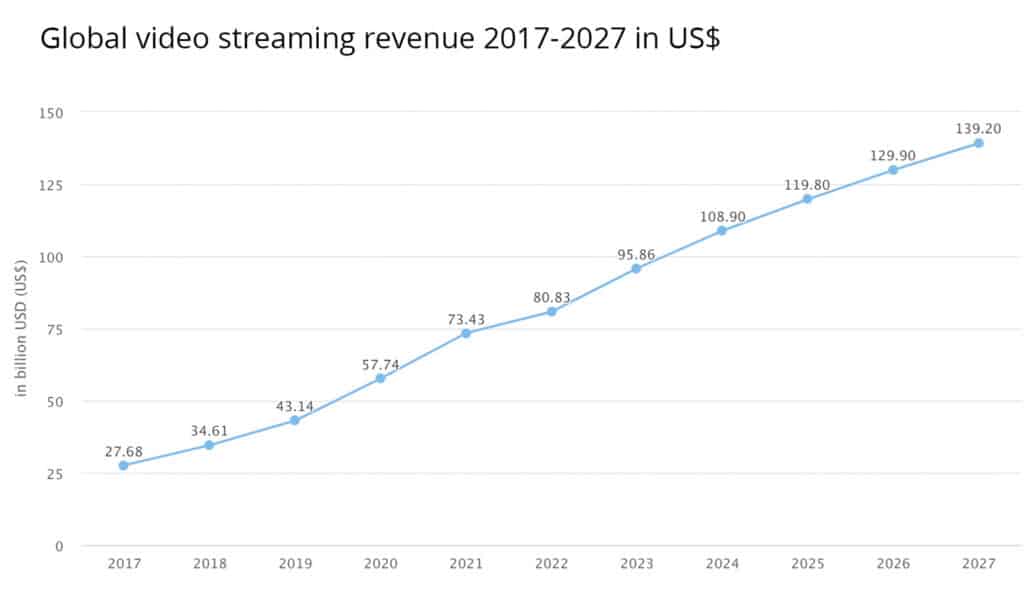
Plainly put, a video streaming website is a place on the internet where videos are hosted and delivered. This is done from a server where the videos and website are stored, via a video player, then to a user who is connected to the internet.
A video streaming website can be used to create your own online community and build a strong brand. Think, for example, of the Albert Heijn cooking videos. The recipe section of the Dutch supermarket is a place where users gain inspiration for dishes and then put everything in their digital basket. Major brands choose to do this on their own video website instead of on Youtube, so that they retain all the grip on the viewer and can have them converted immediately.
A video streaming website can also be used with a direct revenue model, where users pay an amount to be able to stream the videos. Think of purchasing an online course or training (e.g. e-learning, yoga, fitness) and of course the on-demand video platforms such as Videoland and Pathé Thuis.
Behind the different types of video streaming websites is always an online video platform. This platform takes care of all the complexity and all the heavy processes involved in the safe storage, conversion and delivery of videos. An important part of an online video platform is the hosting and streaming infrastructure and the CDN (Content Delivery Network). This together ensures a fast worldwide delivery of the videos.
The largest free online video platform providers are Youtube and Vimeo, but these are solutions that are not suitable when you start working with premium content. Read more about choosing a video hosting platform here. For example, it is difficult to reach a high-quality audience and the privacy and security technology is not well set up. Moreover, you are not building your own platform where the intellectual property rights are fully owned by yourself. Read more about the comparison between Youtube, Vimeo or your own video platform here.
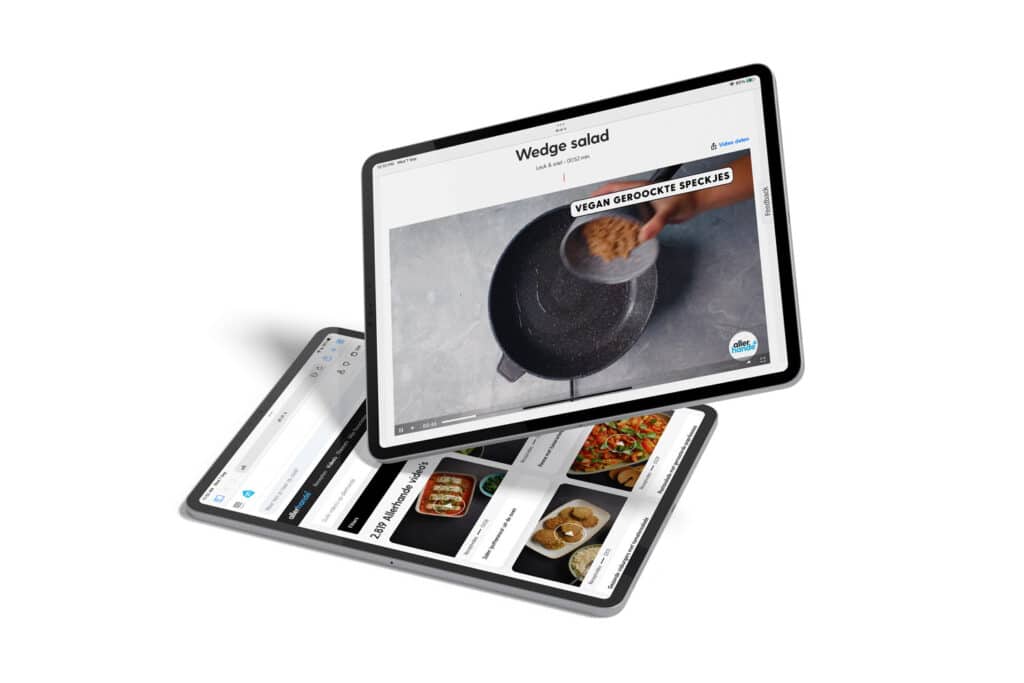
Before you start setting up your own video streaming platform, it is important to first consider a number of essential choices.
For example, how much value do you attach to…
How important is security really for your company and what is it worth to you? For example, is the video content personal or privacy-sensitive, making it unsuitable for everyone’s eyes? Then security will play a large role. Questions arising are: which security certificates does the company you will be working with have? Can you enter into a processing agreement and how are matters such as information security arranged within the company? But there’s more. Your video streaming website must also comply with the GDPR legislation and the European legislation on data information security. Finally, it is important to check where your content is stored. Will it be on Dutch or European territory, or the US, where different regulations apply?
By intellectual property (also often referred to as ‘intellectual property’ / ‘IP’), we are not only referring to the IP on video content and metadata, but also the IP that rests on the video streaming platform you are going to build. Do you have full ownership of the code? Or do you opt for a ready-made solution such as Vimeo OTT or Uscreen where you only receive user rights from the platform? An important business choice, because you may want to sell the platform in the future.
As a Dutch or European party, you may find it better to work with a smaller party in the Netherlands. This ensures a human, personal approach where you are not just another number in the database and can sit around the table to discuss your wishes and requirements for a streaming website. To determine your video strategy, it can be of value to be able to sit down with a party that has a lot of experience with various video concepts.
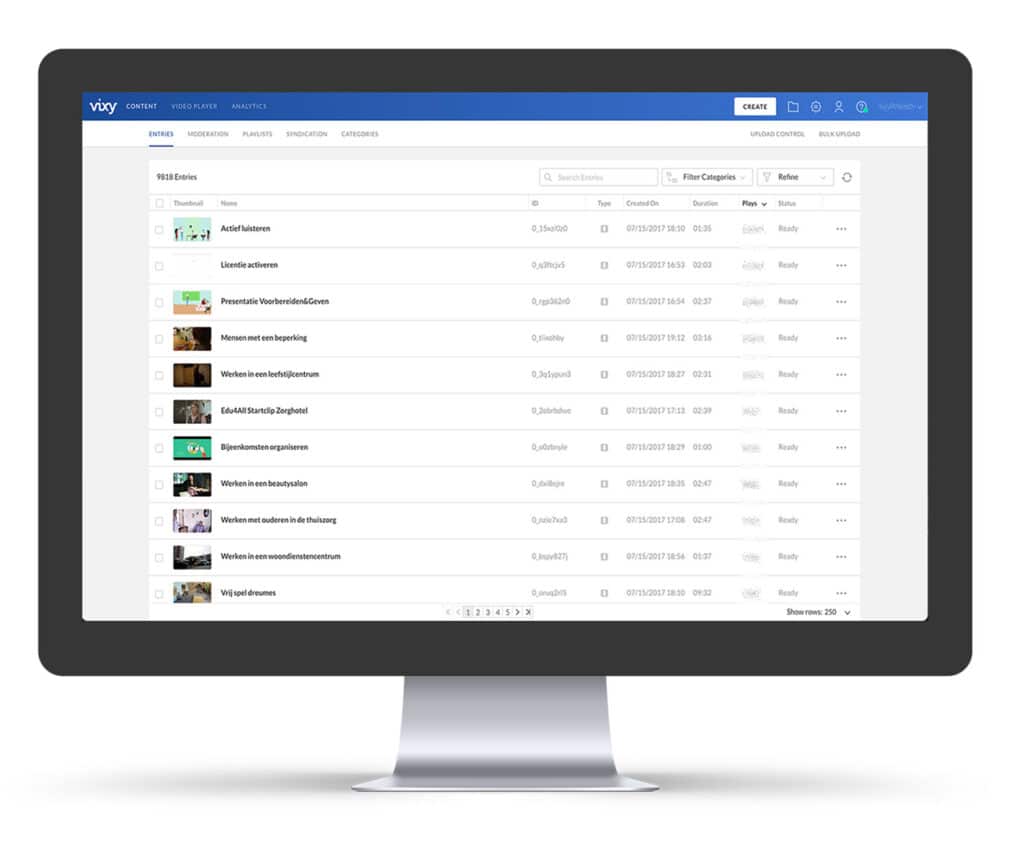
Integration options include links with marketing automation software (e.g. Hubspot, Mailchimp or SendinBlue), identity management software (an existing user system, often via oAuth), digital asset management software (DAM) or, for example, your own payment gateway. VIXY is set up in such a way that the platform can be linked to most software packages.
You may be ready with an out-of-the-box streaming platform, but to what extent will you run into limitations in terms of functionality in the future and to what extent does the platform scale with your wishes? Will the platform remain affordable as you grow, many ready-made streaming platforms have a favorable entry-level model, but suddenly become much more expensive if you fall into the Enterprise segment.
Many platforms are limited in this, but user analytics can provide valuable insights that can help you optimize your video marketing strategy and increase your ROI. How important is this to you?
Do you choose an out-of-the-box solution, build your own platform, or choose a hybrid solution? The meaning of turnkey solutions and your own video website speak for themselves, but with a hybrid solution such as Streampac, a platform is built on existing components. Here, you have all the options and flexibility, but the costs and time investment are still lower than when you start building yourself. Read more about this in the next step.
“I think all of that is (equally) important,” is a thought that might come up, when you read the above mentioned considerations. But of course everything has a price tag. Work out the list of wishes and requirements, give priorities, and ensure that the budget matches with the assigned level of importance. You can always be advised by one of our video experts. They can coordinate with you which solution fits best and determine a roadmap for the technology to be developed.
In our opinion, there are three options for launching a video streaming platform:
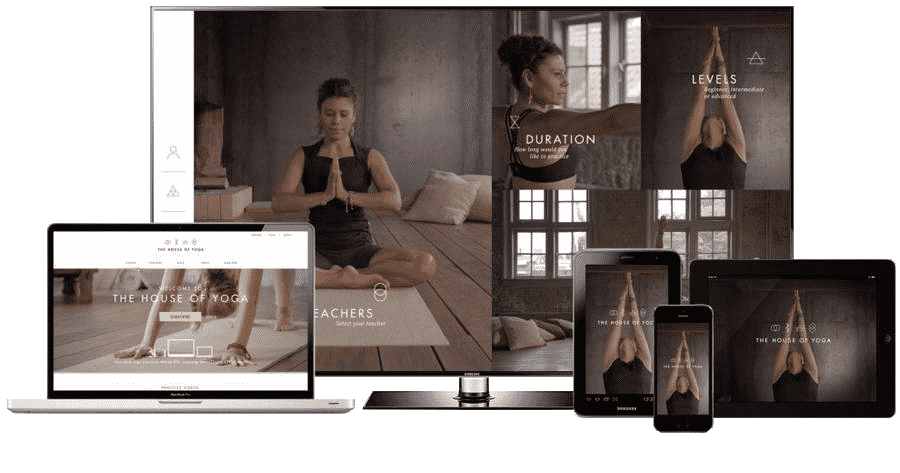
It is important to consider the choice of a video streaming server for the storage and delivery of video content. How do you ensure that your videos are stored securely and delivered ultra-fast (worldwide)? This is all well organized with a professional video platform, but of course you can also get started with this yourself by setting up your own streaming server in the Cloud (Amazon or Microsoft). Keep in mind that with the latter option, you have to arrange a lot of things yourself.
In any case, it is useful that you can quickly and easily upload videos in bulk, have a user-friendly media library, and set roles/rights so that you can collaborate with the whole team. This is all well organized at VIXY. For example, by default, we encode every video to 6 formats, so that with adaptive streaming the highest possible quality is always delivered on every device.
In addition, when choosing a video platform, it is important to consider the CDN (Content Delivery Network) that this party uses. In combination with the storage method (are videos still on slow spinning disks or fast flash storage?), a CDN ensures that your videos are cached worldwide so that they are loaded at lightning speed. There is quite a bit of quality difference between the different CDN providers, with some CDN providers focusing more on caching static pages than dynamic video streams. So choose a video platform that works together with a CDN where the expertise lies in the field of video streaming. At VIXY, we work closely with the CDN of NEP and Akamai (a specialist in the field of adaptive media delivery).
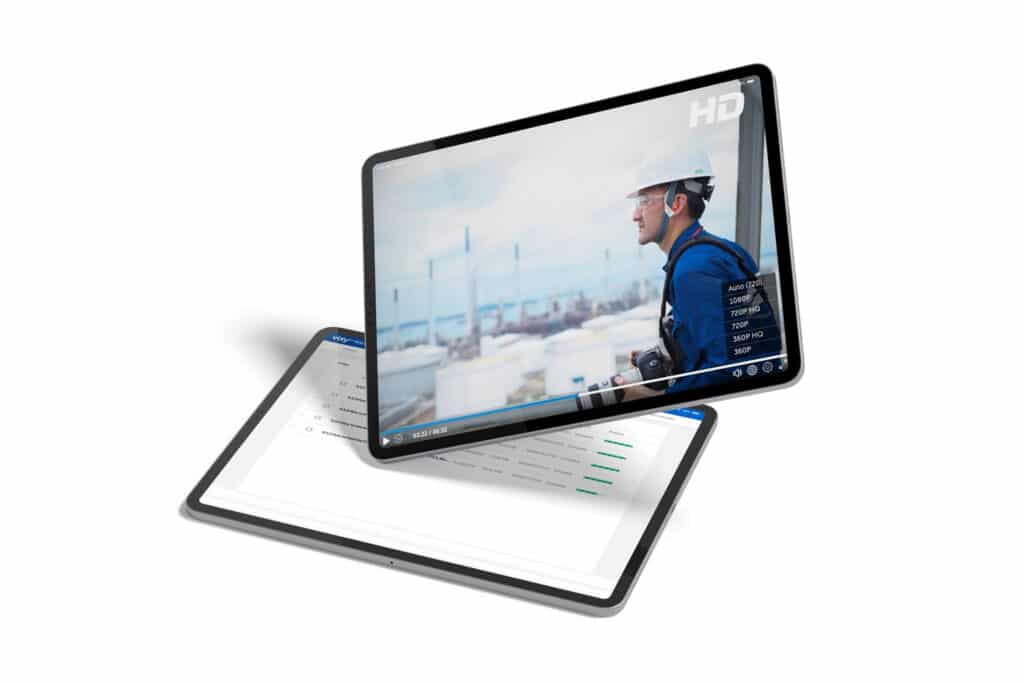
Embedding your videos makes your videos available to users on the website or within the app. This process requires a fast video player that meets your needs. You usually embed a video manually by copying and pasting a code (iFrame or Scrypt embed) that the platform makes available into the website.
With a larger media library, however, you want this process to happen automatically. For example, if you set filter X or tag Y in the metadata of the video, then a video automatically appears on a specific part of the video streaming website. This can be easily achieved by realizing a link via the API of the video platform. Some platforms such as Streampac.io offer this link by default.
An alternative is to use an open source video player. An example of an open source video player is VideoJS. The disadvantages of an open source video player are often that you still have to develop quite a bit yourself. For example, limited video statistics are often collected and things like adding advertisements, subtitles and DRM are difficult.
When setting up the video player, you also have several choices to make. For example, to what extent is the video player adaptable to your own branding and does it fit within the brand identity? Also think about things like subtitling, chaptering and collecting statistics. Or do you not want to collect statistics at all and offer videos completely cookie-free due to legislation?
At VIXY, for example, we offer the following options that you can adjust yourself:
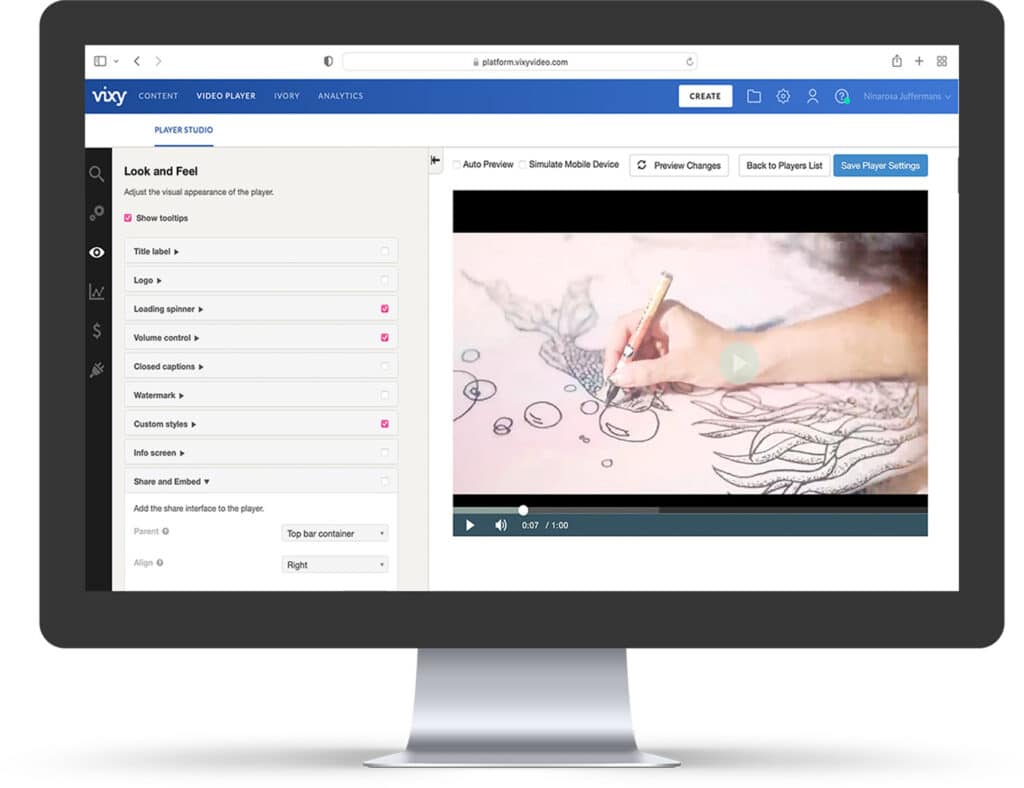
How will you recoup your investment? There are several ways to monetize streaming videos. Think of subscriptions (SVOD), pay-per-view (TVOD), advertisements (AVOD), freemium (combining free and paid), sponsorship (sponsorship of partners on your platform) or online events/ticket sales. Read all about selling videos online and the revenue models in this blog.
Your videos are online and your pricing strategy has been determined but how can visitors make a payment? Connect your own video streaming platform with a payment gateway. Well-known payment providers are Adyen and Mollie but the international Stripe has also been on the rise lately and is a very versatile platform to integrate. Also keep in mind that you have to set videos to be available for a certain time after payment, such as when users pay for a subscription (SVOD) or per video (TVOD).
Do you want to get started with affiliate marketing and realize sales through partners? A smart model is to generate voucher codes and make them available to partners, so that the platform recognizes through which source the conversion happened (for example, a video subscription is confirmed). You can then agree on the revenue-share deal with partners. Common agreements that we encounter are a percentage of the sale, but also a billing model based on the minutes viewed on the platform by these subscribers.
Please note: it is important that both the platform and the payment provider behind the platform support the generation of voucher codes. This is the case with VIXY and Streampac.
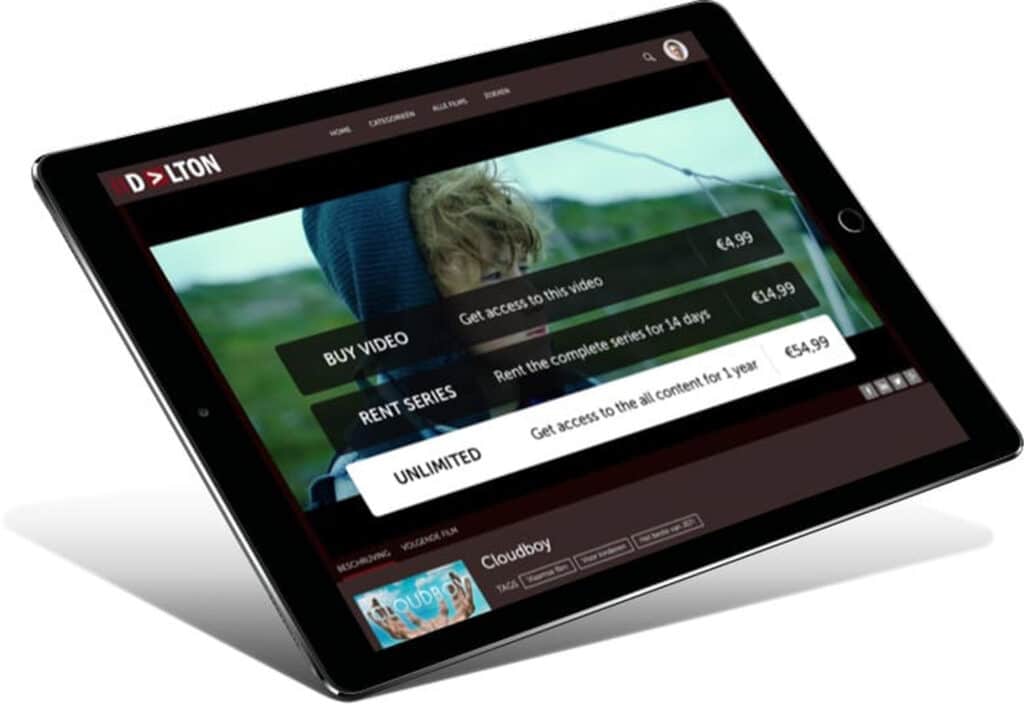
Some videos just aren’t for everyone, such as videos for internal training and explanation, videos for the government or other institutions, or e-learning videos. For some video content, securing video content is therefore even more important. Protect your videos by determining exactly to whom, where, and for what period your videos are delivered. By arranging this properly, you can upload your (protected) videos with peace of mind and link revenue models to them.
With extensive user rights, you can set exactly which user can see what and when. With, VIXY you can make videos available based on country, IP address, website domain, or period. In addition, VIXY offers the option of putting a kind of ‘token’ on the video, which must then be unlocked via the front-end application. So this goes a step further than just IP address or domain level security.
On the administrator side you have to deal with video user rights. An intern does not need all the upload and management capabilities that a manager has. Another example: it might be useful if video producers can directly upload files themselves in the online video platform but that they cannot publish the videos. With VIXY, you can create extensive roles to which specific rights for functionality of the platform are linked. Super useful if you want to collaborate with the whole team!
Perhaps you expected designing and building your video streaming website to be step 1. The reason we only start building the real thing in the last step is simple: videos are the absolute foundation of a video streaming website, not the website itself. You can have the most beautiful website on the world, but if the content is loading slowly, the videos are not hosted on fast servers, the revenue model does not connect well with your target group, or if it just costs you too much time or money, it is of no use to you. That is why it is important to first consider the earlier steps.
We will be the last ones to deny that a video streaming website is a lot of work. No matter how hard we have done our best to work out these steps clearly and clearly, it can still be overwhelming. We are therefore happy to advise you in developing your video strategy and determining the next steps. We are convinced that there is no one-size-fits-all approach and that every video concept is unique. We ensure that you have conversations with a specialist discussion partner so that you successfully start this new adventure.


